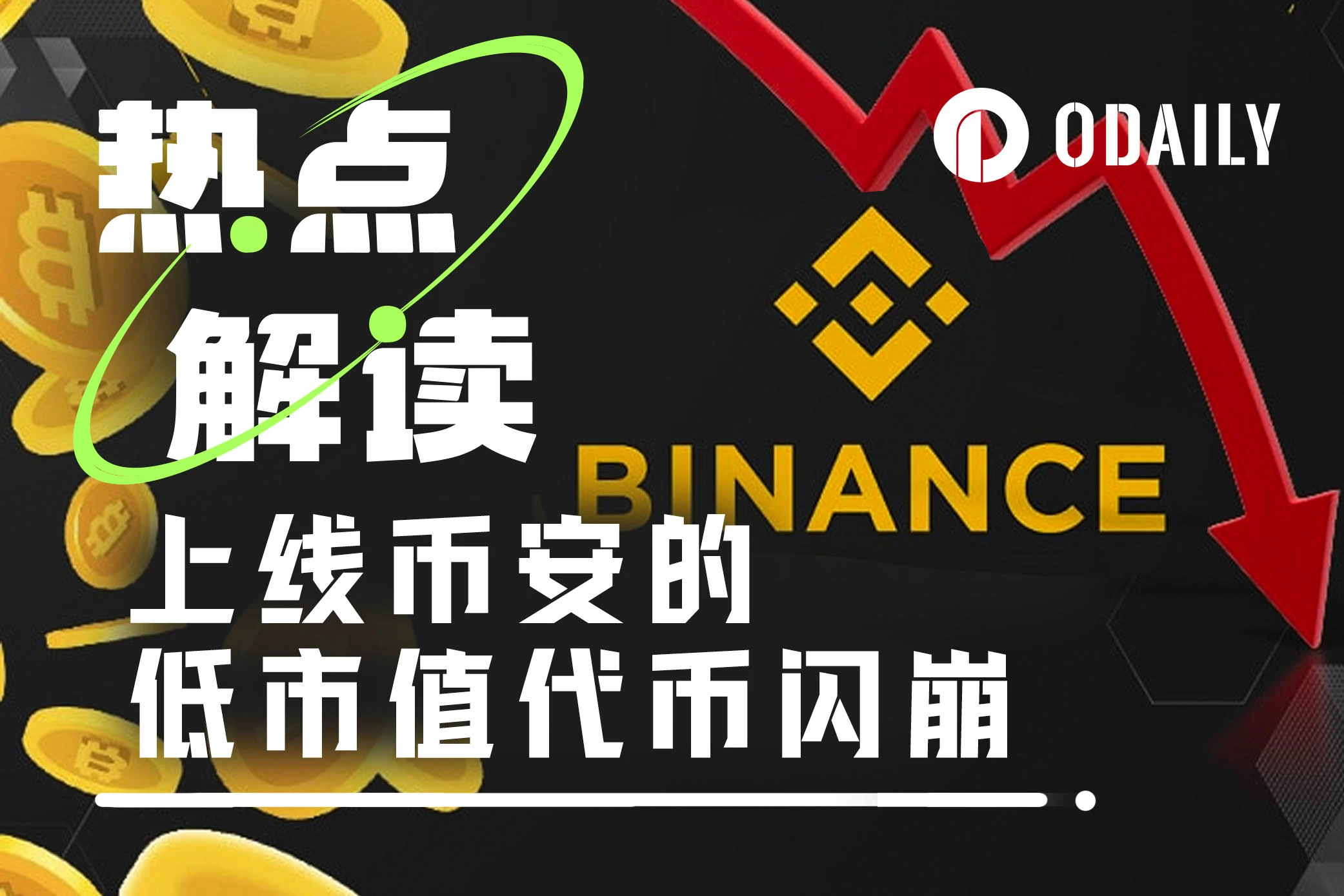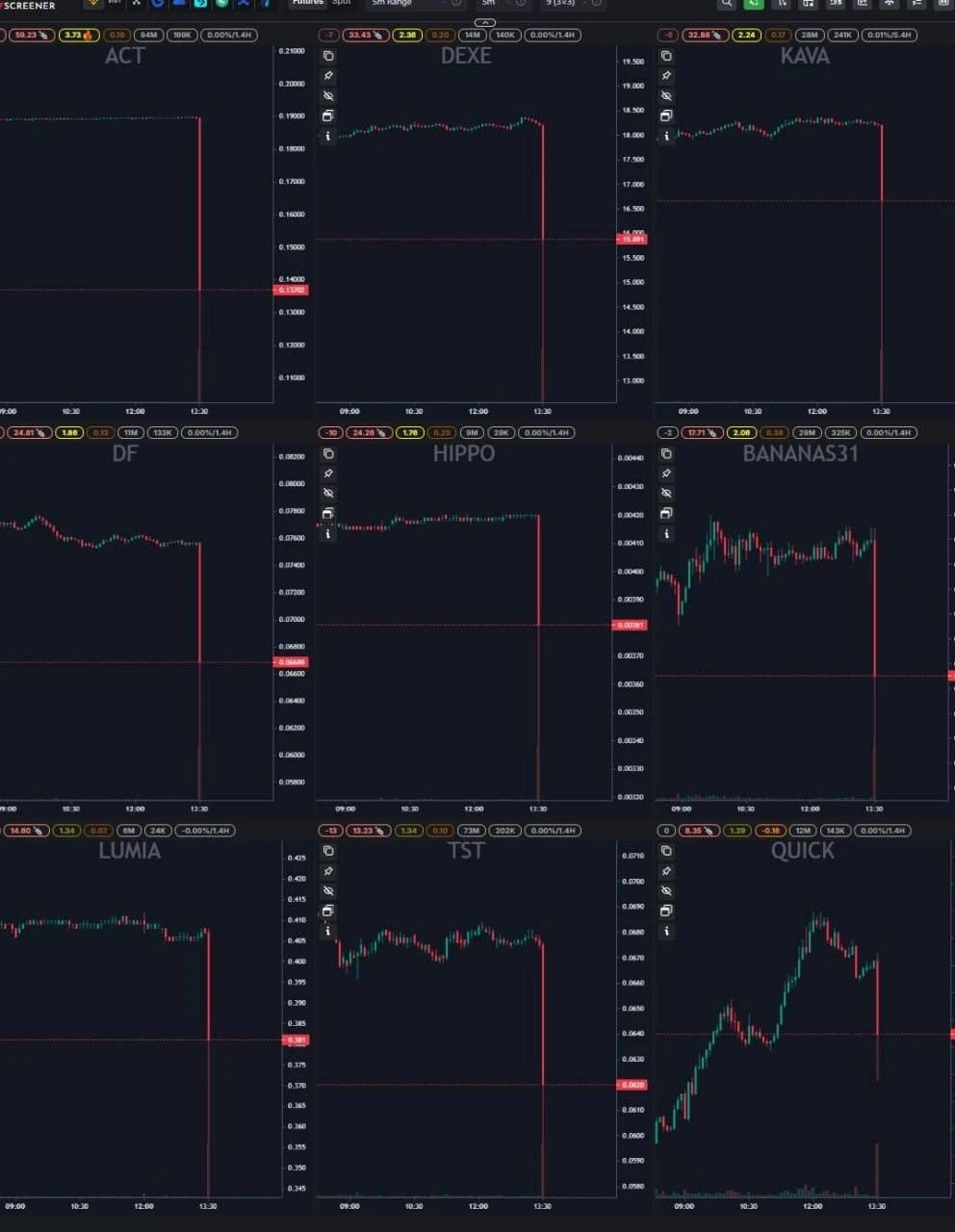Original | Odaily Planet Daily (@OdailyChina)

On April 1st, April Fool's Day, while various project teams were still limited to editing images and playing jokes, Binance delivered a real "nuclear bomb" to the lukewarm market. At 18:30 that afternoon, several Meme coins that had already been listed on Binance's spot market, such as ACT, DEXE, HIPPO, KAVA, BANANAS31, TST, PNUT, etc., almost simultaneously experienced a flash crash, with ACT dropping as much as 50%.

Wintermute dumping? Binance changing rules?
The rapid decline caught the market off guard; who exactly was selling the "value coins"?
The market first pointed fingers at the market maker Wintermute, which often provides liquidity for Meme coins. According to on-chain data, Wintermute significantly liquidated its holdings of Meme coins at the same time, including ACT, BONK, ai16z, BONK, TST, BABYDOGE, MUBARAK, BANANA, BROCCOLI, TUT, etc., with a high overlap between the sold tokens and those that experienced a flash crash.
However, Wintermute did not want to take the blame for the crash. Wintermute's founder and CEO Evgeny Gaevoy stated on social media that the on-chain sell-off by Wintermute was unrelated to the Meme crash, claiming that Wintermute reacted to price fluctuations and engaged in AMM arbitrage afterward. Wintermute clarified that this was reasonable because CEX and on-chain are essentially two different liquidity markets, and there would be a noticeable delay between the dumping and the on-chain liquidation.
Subsequently, some community members analyzed that the flash crash of ACT and other Meme tokens was due to Binance adjusting contract rules. Coinkarma founder Benson Sun posted on social media analyzing that the sudden 50% flash crash of ACT was caused by Binance adjusting the leverage position limits for ACT, where a one-time leverage could only open a position of up to $4.5 million. Some market makers exceeded this limit, leading to forced liquidation at market price, causing the contract price to crash and resulting in a significant price difference with the spot market, which in turn caused the spot market to crash as well.
Binance's announcement of "adjusting the leverage and margin for seven USDT perpetual contracts" was made on April 1st at 15:32, with an effective time of 18:30, coinciding with the time of the flash crash of tokens like ACT, giving users less than 3 hours to react.
ACT's well-known builder 0xWizard also expressed dissatisfaction: "Today ACT was hit hard, with a maximum unrealized profit of over 10 million, but now only a total profit of 1 million. This is a lesson worth 10 million. This version does not encourage builders; remember to pour it in when listed on Binance."
Binance clarifies
In response to the doubts, Binance's "first customer service" He Yi also stated that "the team is pulling details to prepare a response." Hours later, Binance released an announcement regarding the flash crash of low market cap tokens, explaining that the decline was essentially caused by four major users on the platform collectively selling tokens worth $1.05 million, rather than due to Binance adjusting its rules. The announcement is as follows:
Recently, we have noticed a series of consecutive declines in certain low market cap tokens. Upon investigation, it was found that three VIP users cross-sold approximately $514,000 worth of ACT tokens in a short time on the spot market, and a non-VIP user transferred a large amount of ACT from another platform and sold approximately $540,000 worth of tokens on the spot market in a short time. When the price of ACT dropped, some users' futures contracts were liquidated, leading to declines in other tokens as well. No single account with large profits has been identified. Since the tokens have all circulated in the secondary market, the platform cannot intervene in any user's selling behavior. We will continue to investigate this incident, and if there are updates, Binance will further synchronize relevant details.
Binance regularly adjusts leverage multiples based on the liquidity, market sentiment, and trading volume of all trading tokens. To proactively prevent potential fluctuations and risks, we have taken preventive measures to lower leverage multiples. Recently, Binance has continuously issued adjustment announcements for the ACTUSDT perpetual contract, during which there was no market fluctuation, nor did we actively reduce any user's positions. Market makers are an important part of the industry ecosystem, and Binance also provides a complete market maker program to incentivize more market makers to join Binance and improve market liquidity.
Due to recent significant market fluctuations, to ensure the safety of users' assets and reduce trading risks, Binance will make timely adjustments to leverage based on market conditions to avoid systemic risks in the entire trading market. Binance also reminds all users to manage their risks accordingly.
Formula News stated that Binance's preliminary investigation results are inaccurate because they only looked at trading data from the spot market. The large sell-off was actually triggered by the perpetual contract market, with a total of $27 million in sell orders detected during the crash. However, Formula News still believes this matter is unrelated to Binance and speculates that it was the result of a major holder of ACT, who, after maintaining high contract positions for months without igniting the market, capitulated.
What is the truth?
Even though Binance has provided its explanation, the community has made various data-based inferences, and the consensus seems to be that the change in Binance's contract rules was the trigger for this decline, leading to a chain reaction among market makers and major holders. But is the truth really so?
In fact, this was not the first time Binance adjusted the contract rules for tokens like ACT. On March 28, Binance announced that it would adjust the leverage for ACT contracts from 25x to 10x, and on March 31, it announced that the position limit for ACT contracts would be adjusted from a maximum of $9 million to $4.5 million, during which there was no market fluctuation; the latest announcement on April 1 adjusted the maximum position for ACT contracts from $4.5 million to $3.5 million, which is a smaller adjustment than the previous two times. Why did the previous two adjustments not result in a chain-wide crash? It seems unreasonable to directly attribute this crash to Binance changing its rules.
At the same time, was Wintermute's sell-off really for arbitrage? Did the $1.05 million sell-off by four major Binance users scare off the market makers? Not all of the Meme coins sold by Wintermute were those designed for adjustment in this contract; those tokens outside of the contract adjustments also experienced varying degrees of flash crashes. How should this be explained?
Various doubts indicate that perhaps there are hidden factors behind this farce. Insiders revealed to Odaily that this crash and Wintermute's large-scale exit were due to a certain unknown market maker's token being stolen. Because of the hacker's indiscriminate selling, Wintermute chose to actively sell related Meme coins simultaneously. If the decline was due to normal market factors, there should have been market makers supporting the tokens, preventing a situation where there was no rebound after the flash crash.
免责声明:本文章仅代表作者个人观点,不代表本平台的立场和观点。本文章仅供信息分享,不构成对任何人的任何投资建议。用户与作者之间的任何争议,与本平台无关。如网页中刊载的文章或图片涉及侵权,请提供相关的权利证明和身份证明发送邮件到support@aicoin.com,本平台相关工作人员将会进行核查。




